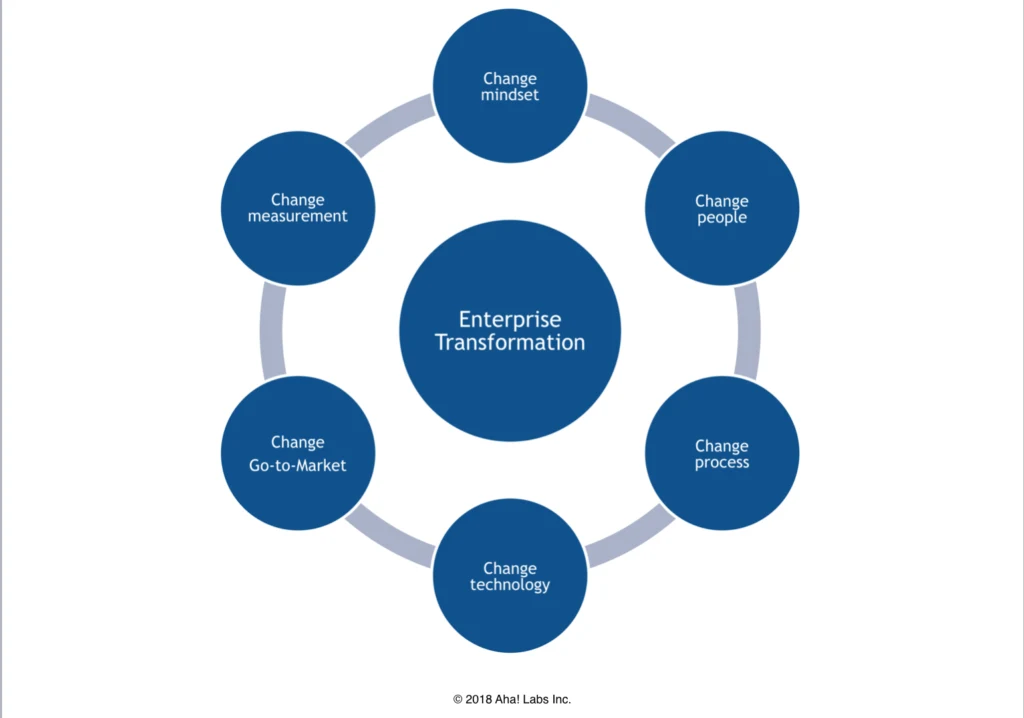
What Is Needed for Real Enterprise Transformation
I want to begin with three business truths. The first is that most companies will need to fundamentally change to better serve customers. The second is that the transformation required will be enterprise-wide and include digital, solutions, and data-oriented strategies. And finally, for meaningful change to happen, the organization needs to think and behave differently to execute on the chosen strategy.
This is what is required to unlock improved customer experiences.
If you are not convinced these statements are true, then I encourage you to read my previous post on the three types of enterprise transformations that we are seeing customers pursue with gusto.
I hope you have read that post and agree. So, let’s get tactical and discuss what needs to happen.
Regardless of the strategy you have embraced to deliver better customer experiences, real enterprise transformation involves focusing the entire organization on six key areas.
This new focus on complete experiences, rather than functionality, is a result of a fundamental shift that has taken place. This shift is due to dynamic marketplaces as well as consumer knowledge and power. The goal is to serve customers holistically, rather than simply managing projects and delivering new capabilities.
Whether your customers are individuals or businesses, they now expect highly personalized products and services to be delivered faster than ever before and without hassle. They now have many powerful channels for voicing demands and displeasure with companies that do not satisfy them.
Orient the thinking of any organization around customer experience and it changes everything. It typically reveals serious challenges. This is a good thing, but like any big new change, it can be daunting at first. The companies that succeed in delivering meaningful customer experiences embrace the change wholeheartedly — because no other path will deliver what is needed.
Delivering exceptional customer experiences should be the driving force behind any enterprise transformation.
Of course, this does not mean that all transformations will look alike. Different companies will be at different points of maturity and apply different strategies to transform. Some will look to new technology, which is typically referred to as a digital transformation. Others will use solutions or data to deliver what customers really want.
But for any of the various forms of enterprise transformation to work, it requires organizational leaders to have a true understanding of why change is needed and what needs to happen. They must also have a clear initiative to rally the organization around.
Transparency and clarity are essential for the team to stop thinking of transformation as an empty word or a vague promise. People need to see an actionable plan that they can clearly discern their role in and the benefit it will bring.
In the coming weeks, I will write in greater depth about what is required for real enterprise transformation. At a high level, it takes changing mindset, people, processes, technology, Go-to-Market, and measurement.
This level of change across a complex organization is not easy. Depending on your company, you might even find that you need to hire new people who have the right skills to deliver the experience that customers desire.
For an enterprise transformation to be a success, the entire organization must embrace it and work together to implement real change.
The more specific and detailed you can be with the “what” and the “how” of each area, the easier it will be to get everybody on board. Then, together you can achieve real and meaningful change.
What do you think is most important for real change across a company?





